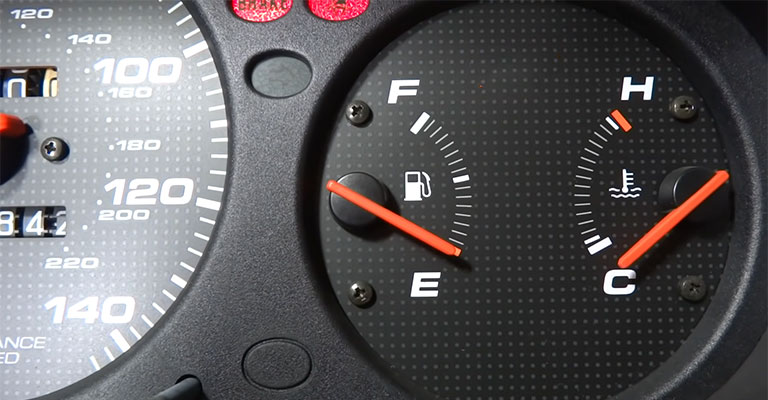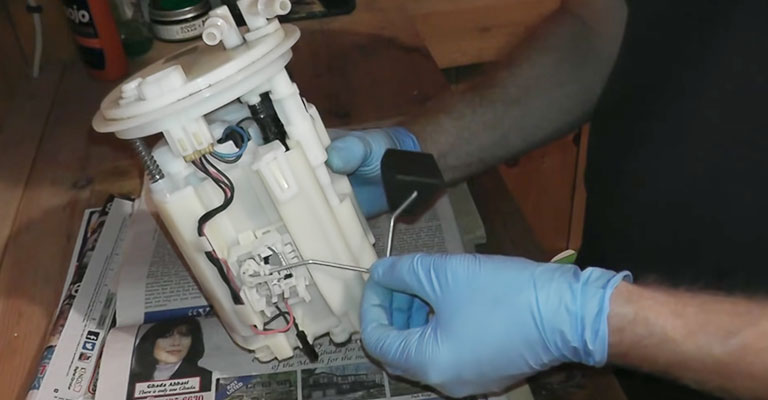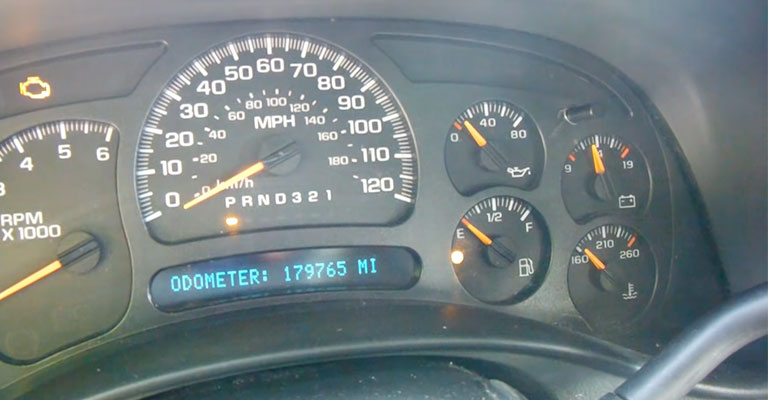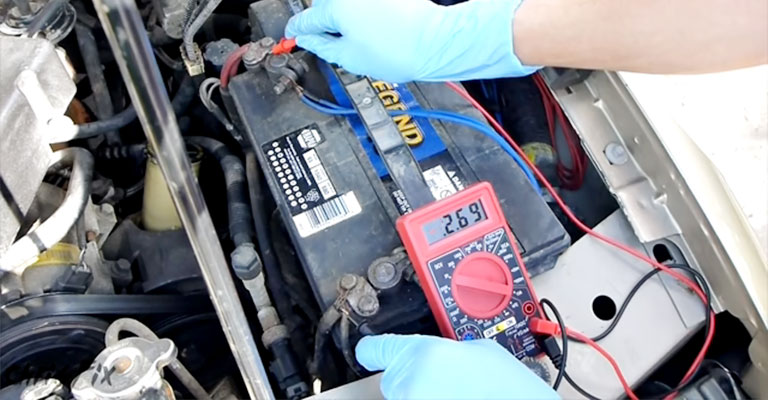Fuel gauge failure is not a common problem in many cars. However, there are possible issues, such as incorrect fuel gauge reading incorrectly and not updating. A notable issue for many motorists is the fuel gauge not updating after refilling the tank.
This post looks into the possible causes of this particular malfunction, i.e., gas gauge reading empty even when the tank is full and how to fix it. Let’s first understand how a fuel gauge works anyway.

How does a Fuel Gauge Work?
A fuel gauge is a simple device in a car that indicates the amount (not the exact quantity or numerical values) of fuel relative to the car’s tank capacity. It has two main markings, i.e., E for Empty and F for Full. However, other fuel gauges may have the marking for half-tank (“½ “) depending on a car’s model.
Usually, two main components make a fuel gauge work, i.e., the sender/sending unit, and the gauge. Briefly, the sender measures the fuel level in the tank, and the gauge displays that level to the driver on the dashboard. The sending unit comprises the resistor and a float and is connected to the fuel tank. Notably, the sending unit is connected to the fuel gauge via a heating coil to the bimetallic strip of the fuel gauge.
The float moves vertically with the changing fuel levels in the tank. And in direct response, the indicator needle on the fuel gauge moves to the appropriate position on the gauge. In brief, the higher the fuel level in the tank, the higher the float goes and sends an electronic signal through the heating rod to the bimetallic strip of the fuel gauge and displays a direction towards the F marking and vice versa.
Note: some cars have a digital gauge with LED and LCD readouts, but the function is the same as the old analog needle gauges. Only the display method has changed, but the float arrangement remains as a measuring device in both gauges.
Why is my Fuel Gauge Slow to Update after Refueling?
Below are several possible reasons why your fuel gauge goes slow after refueling:
Faulty fuel gauge

A faulty fuel gauge could be one reason your fuel gauge is slow to update after refueling. Such problems in a car are often linked to gas gauge failure, whereby if the internal circuits are shorted, they may sit on one position in the gauge.
How to fix it
A short internal circuit of a gas gauge requires a replacement for it to function again effectively and correctly.
The fuel gauge stuck on empty
A fuel gauge may remain stuck on empty despite a refueling if the float is separated from the arm. As a result, it causes the components in the fuel-sending unit to stop functioning altogether. Additionally, in some instances, a faulty resistor may restrict signals, thus causing the fuel gauge to read empty even when the tank is full.

How to fix it
Have an automotive electrical repair technician diagnose your fuel gauge system to determine and fix the main problem.
Defects in the sending unit
The process of gas gauge display begins at the sending unit; therefore, any defects in it automatically affect the readings on the fuel gauge. For instance, corroded wires in the sending unit may stop the voltage to the fuel gauge; therefore needle won’t change despite refueling your tank.
How to fix it
You need to visually inspect your fuel gauge’s electrical wiring/connection to identify any damages or rusts causing problems at the gauge. To some extent, you might have to remove the gas tank to access the sending unit.
However, it’s good that professionals fix such issues if you don’t have the right skills to do it.
A weak battery

Your car’s battery plays a critical role in sending electronic signals, whereby it helps the resistor send signals via a coil to the gas gauge for display. Therefore, a weak battery means it will show low on the gauge.
How to fix it
This problem can be common if you don’t drive your car often or your battery is about to die because it’s old. Therefore, you may opt to replace an old battery. Also, you may drive your car a few days a month or a week to keep the battery alive.
Note
The core function of the fuel gauge is to give a warning when it’s time to refuel. Nonetheless, you can still drive your car with a faulty fuel gauge, but it poses some long-term risks, including engine overheating and clogging of the fuel pump, especially when you frequently drive on low fuel levels. Additionally, a faulty fuel gauge may easily lead to inconveniences and embarrassment of getting stuck on the roadside as you walk to a gas station to get some fuel.
Bottom Line
After refueling, your fuel gauge may gradually update toward the full marking after a few minutes of driving. In some cars, it may update almost instantly after you switch on the ignition. However, if you note an extremely slow update on the fuel gauge after refueling, you need to look out for some defects in your battery, the dash fuel gauge, or the sending unit.
Often such a malfunction is caused by a weak battery, shorting of internal circuits on the fuel gauge, or defects in the sending unit. Additionally, if a fuel gauge needle is stuck on the empty marking, it will hardly update even after refilling the gas tank.
Leave a Reply